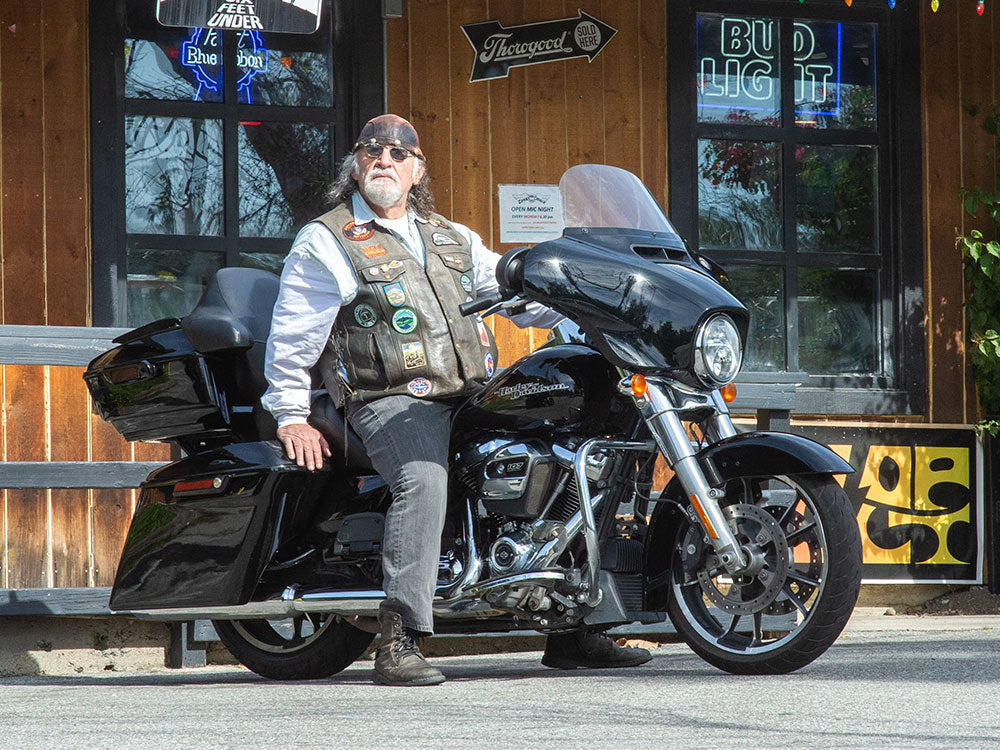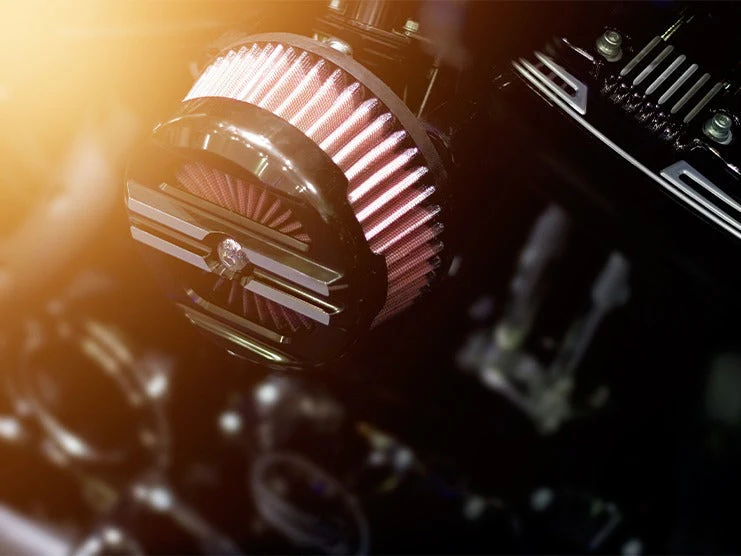Harley Davidson motorcycles are a favorite among riders because they are versatile, performance-oriented, and stylish. Whether you own a Harley tourer or a cruiser, they can be used for city travel, short weekend trips, interstate rides, and cross-country trips. To better enjoy riding your Harley, you need an aftermarket part to block incoming wind, especially on highways.
Cruising on freeways is more comfortable if you install a fairing on your Harley Davidson motorcycle. Some riders prefer a windshield over a fairing, but a fairing tends to offer better coverage than a windshield. This is why Harley Davidson touring bikes are equipped with fairings.
Besides offering wind protection, Harley motorcycle fairings allow you to include a cup holder, GPS, and phone or camera holder. Since the fairings with windshields have more storage space, it is possible to mount windshield bags to carry your wallet, cash, I.D. card, keys, and other essentials.
This article provides information about Harley Davidson motorcycle fairings so you can choose a fairing for your stripped-down cruiser, replace the stock fairing, and buy the right fairing for your specific Harley model.
Table of Content
1. Types of Harley Davidson Fairings
Though Harley Davidson excels at manufacturing stripped-down, nimble cruisers, it does offer a limited number of touring bikes with fairings. Since these cruisers are capable of traveling long distances, having a fairing is necessary to ensure a comfortable and safe ride. Three types of Harley motorcycle fairings are available to riders:
Harley Stock Fairings
Stock fairings are the standard version that comes pre-installed.
Harley OEM Fairings
OEM fairings are optional upgrades that riders can buy from a Harley dealership. An OEM fairing can fit different motorcycles so long as they are compatible.
Harley Aftermarket Fairings
Aftermarket fairings are manufactured by brands other than Harley Davidson. These fairings have different shapes and designs than OEM and stock fairings but can be equally useful if purchased from a well-known brand.
1.1 Stock Fairings for Harley Davidson Motorcycles
Harley Davidson offers stock touring fairings for three motorcycles:
- The Harley Davidson Low Rider El Diablo features a FXRT fairing inspired by the retro FXR fairing
- The Harley Davidson Road Glide features a shark-nosed fairing
- The Harley Davidson Street Glide features batwing fairing
Other Harley motorcycles with fairings include:
- Harley Street 500
- Harley Street 750
- Harley Softail Low Rider S
- Harley Nightster Special
Since these bikes are not designed for touring, they feature a small nose fairing. The entry-level Harley Street 500 and 750 were discontinued after 2021, but the 2023 Low Rider S and Nightster Special feature a club-style nose fairing.
Harley Davidson FXRT Fairing
In 2022, Harley Davidson added the FXRT fairing to its Softail Low Rider lineup. During the same year, the El Diablo, a much-anticipated variant of the Low Rider ST, was launched. The FXRT fairing is a standard feature of the El Diablo and an optional feature for the Low Rider ST.
The FXRT fairing is fixed to the frame, causing the handlebars to turn inside the frame. When parked, the fairing will face forward no matter the direction of the handlebars and wheels. Since this fairing does not mount to the handlebars, it will not add weight to the front.
The FXRT fairing does not have a built-in infotainment setup and does not have enough space to install an aftermarket touchscreen. However, you do have a Rockford Fosgate audio system pre-installed on the El Diablo fairings. If you buy the standard Low Rider ST, then the sound system will cost you another $1,000.
Besides the Low Rider, the FXRT fairing can be installed on the Road King and any Harley bike featuring the redesigned Softail chassis. This stylish fairing offers impressive wind protection for its size. Due to its Softail chassis, the Low Rider is labeled as a mini-touring bike best suited to short and average riders. Tall riders can ride this bike, but the fairing may not provide adequate wind protection.
For short and average riders, the FXRT fairing will protect them from being buffeted by the wind. Whether you use an FXRT fairing for frequent short-distance trips or occasional long hauls, it will ensure optimal riding comfort. The big central vent at the top and two side vents at the bottom direct the wind towards the engine, helping keep cool during hot days. But these open vents are not an ideal feature for winter unless you install a vent block closure.
The aftermarket versions of the FXR fairing are also available at Amazon and other online stores.
1.2 Harley Davidson Batwing Fairing
Originally designed for the Harley Davidson Street Glide, the batwing fairing is a popular fairing. This is because it can fit on almost any Harley motorcycle, including Road King, Dyna, and Sportster models. Since this stock fairing is only available for the Street Glide, you can look for OEM fairings at a Harley dealership. You can also find inner batwing fairings, stereo systems, and fairing windshields for your bike.
The batwing fairing is mounted at the front fork and moves with the handlebars. This heavy fairing features a built-in standard infotainment touchscreen and speakers, which can add weight that can affect handling. However, some riders appreciate the extra weight as it helps improve stability. Though the change in handlebar movement is negligible, it can make handling easier or harder depending on the rider.
The front-mounted fairing is kept at a comfortable distance from the saddle. Riders can easily access a touchscreen in an upright riding position, especially taller riders. The gauges are positioned above the screen, allowing riders to check their speed and fuel without taking their eyes off the road.
Batwing fairings offer optimal wind protection to riders of all sizes, preventing wind from hitting the chest and reducing fatigue on longer trips. It can also direct wind over the head of even a 6 '3'’ rider with a 32-34” inseam.
The side cuts of the batwing fairing leave openings that make it easier to scan the ahead when making slow-speed maneuvers, riding around debris, or avoiding obstacles.
The batwing fairing only has one central air vent despite appearing to have side vents. The vent provides much-needed airflow for summer rides. Compared to the three open vents on the FXRT fairing, the single vent is less bothersome in winter.
For the older stock Street Glide fairings and OEM batwing fairings, a vent closure button was available. However, Harley Davidson has since removed that feature in the newer models. Since there is only one vent, you will not need the vent block closure. However, if you prefer having one, then you can find aftermarket batwing fairings with vent closures online.
1.3 Harley Davidson Shark Nose Fairing
Introduced with the Harley Road Glide lineup, the shark nose fairing is another option for Harley owners. Riders can install the shark nose fairing on these Softail models:
- Softail Deluxe
- Softail Heritage Classic
- Fat Boy Lo
- Road King
You will need a fairing mounting kit for Softail models. For the Road King, you must relocate the lights to the front hole. You can also swap a Street Glide batwing fairing with a shark nose fairing if you have the right mounting brackets.
The shark nose fairing’s styling and inner arrangement are different from the batwing fairing. Due to the deep-set infotainment screen, even riders with a height of 5’11’’ cannot reach it in an upright riding position. To operate the bar-mounted controls, you will need to lean forward. Also, the gauges are positioned below the screen, forcing the rider to look away from the road for a split second to check information.
Much like the FXRT fairing, the shark nose is a fixed fairing mounted on the frame. This prevents the weight of the built-in speakers and touchscreen from being added to the handlebars. Unlike the Street Glide fairing, the Road Glide fairing has no openings that lower visibility but provide extra leg protection. However, for optimal leg protection, you will need lower fairings. Therefore, few riders appreciate the closed shape of the shark nose fairing.
The shark nose fairing is larger than and can deflect more wind than an FXRT faring, making it suitable for tall riders. However, unlike the batwing fairing, riders have mixed opinions about the shark nose fairing. When sitting behind the shark nose fairing, taller riders feel more air around their chests and heads, thus deeming it inadequate. Many Harley owners have also reported light helmet buffeting, especially when the air vents are open.
The vents on the Road Glide fairing feature a closure button. Once the vents are closed, the fairing eliminates any wind buffeting to the helmet. The closure button is also useful when it is raining. The shark nose fairing has a central top vent and two side vents. You can open them to provide ventilation during hot days. A great bike for cross-country trips, the Road Glide owes its highway performance to its fairing.
1.4 Harley Davidson Nose Fairing
Harley Davidson introduced its compact nose fairing on its entry-level street bikes (Harley Street 500, 750), dark custom cruiser (Nightster Special), and classic cruiser (Low Rider S). The Harley nose fairing catered to riders looking for a cruiser or a standard bike with a fairing. It is possible to mount this fairing on stripped-down cruisers, naked bikes, and cafe racers.
Some might argue that a nose fairing offers insufficient wind protection. But because lightweight cruisers and standard bikes are not designed for touring, they often do not need a full fairing. Riding on city streets at 35 mph will not often result in heavy buffeting, fatigue, and other issues due to strong winds.
Detachable nose fairings are also available for riders who enjoy switching between the faired and naked motorcycle look.
With the right mounting brackets, you can mount a nose fairing on almost any Dyna, Sportster, and Softail motorcycle. However, they tend to be more accessories than functional add-ons. Available in different colors, you can cover the original paint with a custom paint job.
1.5 Harley Davidson Quarter Fairing
Harley Davidson offers quarter fairings as an OEM option. You will not find this fairing as a standard feature on any Harley, yet it is readily available at local dealerships and online. The quarter fairing comes with an optional detachable kit and a windshield. The quarter fairings are easy to install if you have the model-specific mounting brackets. It can easily fit the following models:
- Harley Davidson Softail Street Bob 114 FXBBS (2021-onwards)
- Harley Low Rider S FXLRS (2020-onwards)
- Harley Softail Standard FXST (2020-onwards)
- Harley Softail Street Bob FXBB (2018-onwards)
- Harley Low Rider FXLR (2018-onwards)
Compared to the nose fairing, the quarter fairing offers better wind protection and helps reduce air drag. Customer reviews reveal that the quarter fairing can ensure a safe and comfortable riding experience on interstates. Even a rider with a height of 6’ will not feel the wind buffeting against them. However, nose fairing is not as reliable as stock touring fairings.
2. Takeaway
Harley Davidson motorcycles can become more functional and stylish by adding a fairing. If you are not sure which Harley fairing would suit your needs, you should visit your local dealership and consult a fitment specialist. You can sit on touring bikes to see how much coverage different fairings offer you. Mounting a quarter or nose fairing on your bike for a trial run is also an option. Make sure you prioritize a fairing’s capabilities over its looks to ensure a worthwhile investment.












Leave a comment
All comments are moderated before being published.
This site is protected by hCaptcha and the hCaptcha Privacy Policy and Terms of Service apply.